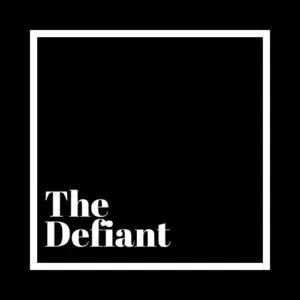In this essay, I want to discuss the concept of Asset Management in the Decentralized Finance ecosystem. This is particularly important to us because, for over a decade, we have been Financial Advisors in the Traditional Finance world. We have seen what works, and what doesn’t. We have tried to get clients to invest in certain funds, programs, and products, knowing they were helpful.
We have also heard countless pitches from various vendors, money managers, fund companies, private investments, etc. We have an idea where the disconnects exist among what fund managers can provide, what clients really need, what clients think they want, and what advisors can provide.
We started to get really excited in early 2019 when we saw the potential of DeFi, protocols, composability, Security Tokens, DEX’s, and derivatives, and how they can be combined to create solutions for investors.
In the Traditional Financial world, we look at each client’s life, goals, needs, income, and risk profile. We try to then find the right allocation of investments that fit all those parts of their life. It is a relatively manual process and generally comes with some degree of standardization. Meaning several types of clients might be in the same investments.
In the last several years, we have seen the rise of robo-advisors like Betterment, Wealthfront, and Personal Capital. We have also seen the growth of self-investing platforms like Robinhood, which have brought so much investment management back to the investor, as algorithms and index funds have taken much of the alpha out of the market.
So where have we come from, where are we now, and where are we going? Why has DeFi Asset Management grown so quickly?
Before the excitement of DeFi there was crypto trading. With the rise of Ethereum usage, and the ERC20 tokens, came the Decentralized Exchange out of a desire to move away from the Centralized Exchanges, and the hazards they bring.
In addition to DEX’s came a desire to hedge, margin, lend and borrow. We were met with the need to create incentive mechanisms around liquidity and staking. DeFi very quickly became complex for anyone that wasn’t following the daily growth.
However, DeFi has several aspects that play favorably for Asset Management - Transparency, Composability, Trustlessness.
Transparency
In the Traditional Finance world, transparency is somewhat difficult to ascertain. Because of lengthy (2-3 day) settlement times, and typical quarterly reporting, many fund managers only have to publicly display their holdings once a month or once a quarter. This means that when I invest in a fund, I might not know exactly the holdings at that moment. I might know the performance of the fund, and the managers as of the previous quarter.
In Decentralized fund management, I have up-to-the-block visibility into the holdings of a fund or token, as well as the performance of the fund and manager.
Melon Protocol, and their associated Avantgarde Finance, have pioneered the ability to easily create a fund, including the trading tools, reporting, investment mechanism, and fees for the manager. They are bringing the Hedge Fund or Private Investment Fund to, technically, anyone with an Ethereum wallet.
Set Protocol took this approach as well when they created Token Sets. First was the robo-advisor type token that would rebalance based on an allocation or technical trading strategy. They then added Social Trading, where my funds essentially follow my favorite trader. Imagine in Traditional Finance being able to follow the strategies of Paul Tudor Jones, David Tepper, Bill Ackman, without having to be an Ultra High Net Worth investor.
Set added the tokenization of my investment, so I can easily track my performance and holdings, and even move it to another wallet.
Composability
We were excited about composability early on in the growth cycle of DeFi. In Traditional Finance, the Financial Advisor really has to work to create a portfolio that includes growth, income, hedge, and liquidity. That level of management comes with a cost - higher fees.
DeFiZap, now Zapper.fi, first changed the game with the ability to move into multiple positions, layering exposure, yield, and risk management in one transaction. They were also among the first to help me, the investor, through the process by evaluating my risk profile, and suggesting the Zap that might fit. The investment is not tokenized, but I do have the ability to exit in one transaction as well.
With more incentives and derivatives being created, and more ability to derive income on leverage, while also hedging, the need is even greater for an application to make the process simpler - I want to participate in the growth of a few tokens, with limited downside, and some income.
RAY, or Robo-Advisor for Yield, has also created a new form of Asset Management, allowing me to receive an overall higher return on my low-risk lending investment by moving funds among different lending protocols. In Traditional Finance, the equivalent would be moving my money to whichever bank is paying the highest interest rate on savings accounts, without the fees and friction associated with moving banks.
Trustlessness
Of course, since we are building on Ethereum, I have the ability to just connect my wallet, and move in and out of some of the Asset Management options, without having to provide KYC information, and really without having to know the managers.
PieDAO has somewhat upped the game here by adding the DAO aspect to fund management. As a holder of their DOUGH token, I can participate in the creating and management of the fund in which I invest. The idea is to create diversified portfolio tokens, partly by relying on the “wisdom of the crowd.”
Based on the above concepts, protocols, and projects, we see some exciting future potential in DeFi Asset Management.
Financial Architects
We have constantly referred to the new breed of fund managers as Financial Architects. They are straddling between financial managers and technologists. With the advanced programming sometimes required to understand and create these strategies, most Financial Architects will come from mathematics or statistical backgrounds.
The availability of data and internet, along with the Decentralized nature of Blockchain will allow those Architects to come from anywhere in the world, and to even be almost any age and experience level. Young programming geniuses will be able to create growth and income hacking algorithms to rival any hedge fund, and access to tools like Melon and Set will allow them to offer their fund management to anyone in the world with an Ethereum wallet.
I would be remiss if I didn’t point out Mona El-Isa’s brilliant article about the Future of Fund Management. A must read.
Synthetic Assets
The growth of protocols like Synthetix and UMA are creating the ability to mimic off-chain assets while keeping all management on-chain. This is seen in assets like foreign currencies, oil, and gold that are currently available in synthetic forms on the Synthetix platform.
A recent HackMoney hackathon winner - MyDeFiPie - used UMA to create synthetic S&P 500 Index funds to allow for a DeFi-based asset management tool that includes exposure to Traditional Finance assets, funds, and indices.
Synthetic representations will allow investors and fund managers to create exposure, hedges, and diversification across traditional and crypto assets.
Real-World Assets
As more real-world assets are tokenized and placed on-chain, we will see the ability of fund managers to include these in portfolios. We may see funds (tokens, Zaps, etc.) that include Real Estate, Hedge Fund shares, and private companies.
Of course, these assets come with additional income and growth mechanisms, that can be examined via the transparency of Ethereum, and algorithmically allocated.
Along with Real World Assets, we will see the cross-chain capabilities, allowing tokens and assets from chains other than Ethereum to be included in the portfolio. I might want Bitcoin and a Real Estate Token that is created on the Tezos chain to be included in a portfolio.
Hyper-Customization
Even in Traditional Finance we already see the ability of Robo-advisors like Betterment to help me plan for a specific event, or goal, and reallocate my portfolio accordingly.
Using the composability of Ethereum and DeFi, I will be able to have a highly customized portfolio based on my life. If I am saving for my retirement, and my child’s education, I live in Texas and am susceptible to the price of oil, my job is based on the value of the Stock Market, and I want to take one big vacation per year...I will have the ability (theoretically) to create a portfolio that is diversified, contains hedges, creates income, and provides enough liquidity to help me reach my goals.
What are the Risks?
We enjoy the theoretical speculation and like to think of this beautiful, decentralized future in which we all reach our financial goals. However, we know there are risks and roadblocks along the way.
Hacks and Gamification
We have already seen the negative consequences of Smart Contract hacks, and gamification of composability and exchange mechanisms. Smart Contracts have been drained of funds in seconds, and they don’t generally offer much in the way of insurance. We will require more audits, and protections as we aim to increase adoptions.
Liquidity and Algorithmic Trading
Currently, liquidity in certain tokens and protocols is not at a level we would like to create a healthy market. It all looks rosy as funds and tokens increase in value. However, if there is a significant downturn in the Crypto market, and the algorithms and composability that have created the growth and income abilities start to sell, we might see extreme slippage, and even an inability to liquidate at all.
In addition, the genius of the developers will quickly remove much of the arbitrage that may exist as new protocols and incentives emerge.
Risk Assessment
While we do have transparency into the holdings and movements, and we have tools such as DeFiScore to help gauge the relative risk of many of the protocols, we still are without a great tool or method of assessing the risk of a portfolio, or even an asset in the DeFi ecosystem. This would help greatly in the ability to understand my potential risk, drawdown, and scenarios in the event of a bear market, or even a selloff.
Bringing the Masses
The Decentralized Finance Asset Management tools, developers, architects, and ecosystem has the potential to bring in millions of investors, many of which have never had the opportunity to invest before. They might have been cut off from the Traditional Finance system because they didn’t have enough money to warrant the fees, or they lived in a country without access to a trustworthy financial system.
We might see more users of DeFi who have previously felt like they didn’t have the knowledge to invest. Some of these new Asset Management systems can take the form of goals-based, set-it-and-forget-it applications that allow users to deposit, and not worry much about the underlying assets or protocols.
Some small amount of cryptocurrency, even a stablecoin, and an Ethereum wallet, and a person can be investing and growing their assets, in a trustless, non-custodial, transparent manner.
—By Adam Blumberg, Interaxis co-founder
[This story was written and edited by our friends at The Defiant, and also appeared in its daily email. The content platform focuses on decentralized finance and the open economy and is sharing stories we think will interest our readers. You can subscribe to it here.]

